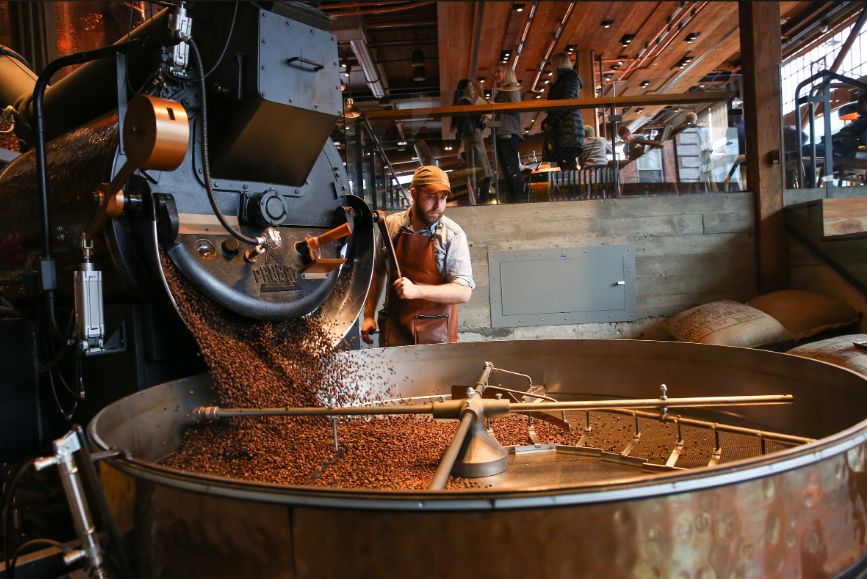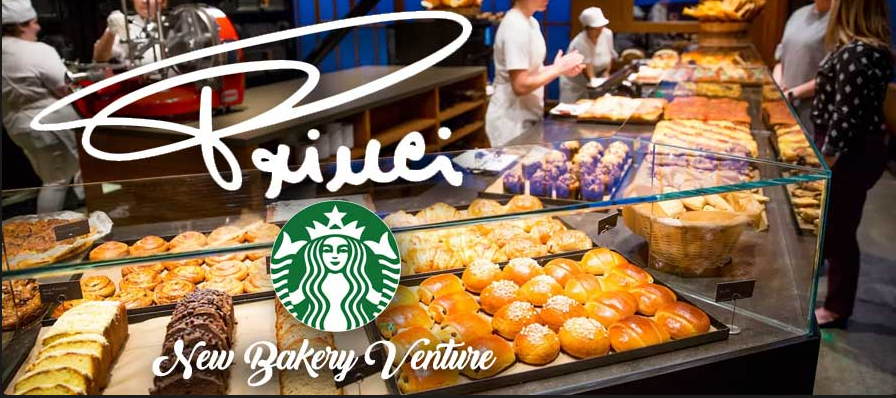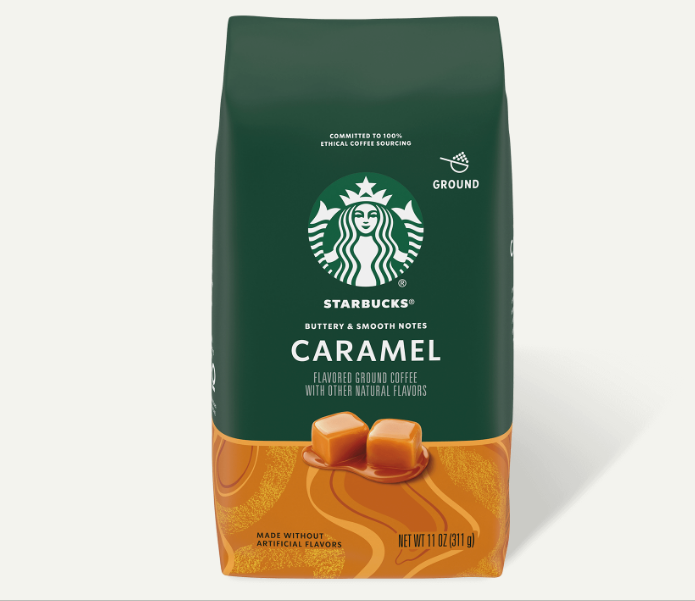Starbucks didn’t just sell coffee; behind that cozy café vibe lies a clever strategy that’s more than just a caffeine fix—it’s called vertical integration.
Now, what does that fancy term mean? Well, it simply means taking control of every step, from the sun-kissed coffee bean to the perfectly frothed milk.
Instead of just buying coffee beans from someone else, Starbucks decided to grow its own beans, roast them, and serve them all under one roof. It’s a bit like saying, “Why buy the milk when I can own the cow?”
Let me spill the beans on how this vertical integration strategy transformed a small Seattle coffee shop into a global phenomenon and how you can use similar tactics in your small business to increase your profits and dominate your niche.
If you would like to know about the challenges of this strategy before hopping on it, you can read it here: How Starbucks Navigated the Challenges of its Supply Chain to Become Successful.
Starbucks didn’t just stumble upon vertical integration; they embraced it like a warm hug on a chilly morning. Here’s how they brewed up their success:
Starbucks has jumped on the e-commerce bandwagon big time. By selling their goodies straight to you through their website and mobile app, they’re cutting out the middlemen and keeping more cash in their pockets. It’s like saying, “Why go through the hassle of traditional retail when we can deliver our coffee goodness directly to your door and keep the profits flowing?”

Starbucks directly sells to its customers through its website:
https://athome.starbucks.com/product-overview
Starbucks is totally crushing it with its mobile app! Yep, you heard right. More and more people are ditching the line and whipping out their phones to grab their coffee fix. By the end of last year, a whopping 31% of all orders in Starbucks stores were placed through the app! That’s a record-breaking number, folks. It’s like everyone’s become a pro at ordering their Pumpkin Spice Latte without saying a word.
This mobile ordering has led to a 15% increase in sales and a 10% increase in customer satisfaction, according to a company press release in 2022.
Climate change is like the ultimate coffee villain, threatening to mess up our beloved morning brew. Starbucks knows they need to tackle this head-on to keep our cups full and their business thriving. So, what did they do? They bought their own coffee farms, not just for growing beans but also as research labs to outsmart this climate menace.

Starbucks’ ownership of Hacienda Alsacia, a coffee farm in Costa Rica, allows the company to control a key part of its supply chain and ensure the quality of its coffee while also experimenting with different growing techniques and coffee varieties.
This hands-on approach helps Starbucks keep their coffee game strong and consistent, cutting down on the need for outside suppliers and dodging those annoying supply chain mess-ups.
To make this happen, the farm is like a coffee playground with over 350 different varieties of coffee trees. Starbucks runs all sorts of experiments here to create new hybrids that can tough it out against harsh climates and diseases like coffee leaf rust. This research is super important because, let’s face it, diseases and climate change are always trying to mess with coffee production.
Starbucks adopts an open-source approach by sharing its research findings with farmers worldwide (not just those who supply coffee to them) and distributing millions of these climate-resistant seeds to farmers around the world. This collaborative spirit helps uplift the entire coffee-growing community and promotes sustainable practices.
The farm focuses on innovative agricultural techniques, such as soil testing and water usage reduction, to enhance productivity while minimizing environmental impact. This commitment to sustainability is crucial for the future of coffee cultivation.
Apart from the farm, a recent report revealed that Starbucks is working with local farmers in Colombia to develop climate-resilient coffee varieties, addressing the challenges of climate change in its supply chain.
They are taking matters into their own hands through its vertical integration into coffee farm ownership and research to ensure a continuous supply of high-quality coffee.
Starbucks has really stepped up its game by investing in its own roasting facilities, and it’s a total game-changer. This means they can control the roasting process like a boss, ensuring that every cup of coffee tastes as consistent as your favorite playlist. No more surprises—just solid, delicious coffee every time!
These roasting plants are no small potatoes; they can roast up to 900 pounds of beans at once in these massive rotating drums. It’s like a coffee rollercoaster ride, and it saves them both time and money. With this kind of capacity, they can keep up with the huge demand for their coffee while trimming down costs. Who doesn’t love a little efficiency?

And let’s talk tech! Starbucks is all about using the latest gadgets and gizmos to streamline operations. Take their Kent Flexible Plant, for example. It’s a multitasking marvel that handles roasting, tea blending, and producing soluble coffee—all under one roof. It’s like the Swiss Army knife of coffee manufacturing!
By mixing artisanal roasting techniques with cutting-edge technology, Starbucks is not just delivering the high-quality coffee we all crave; they’re also innovating for the future. Their in-house roasting capabilities give them a serious edge over the competition.
Starbucks has strategically expanded its portfolio across the food and beverage industry through its acquisitions and partnerships. This Starbucks business model has aided it in tapping into other niches and related ones and has contributed significantly to its growth in several key ways.

Partnership with Princi:
Back in 2016, they decided to get cozy with a little Italian bakery called Princi. Princi is known for its drool-worthy artisan bread and handcrafted treats, and Starbucks thought, “Hey, we could use some of that magic in our stores!”
So, Starbucks became the global bestie of Princi, bringing their delicious baked goods into Starbucks Roastery and Reserve locations worldwide. The goal? To take Starbucks’ food game to the next level and give customers a taste of something special to pair with their premium coffee.
Now, this was a big deal for Starbucks because they had never actually baked anything in their own stores before. It was like they finally decided to learn how to cook instead of just ordering takeout all the time. But hey, better late than never, right?
By adding Princi’s goodies to the menu, Starbucks is attracting more hungry customers and encouraging them to spend a little extra, especially in their fancy Roastery and Reserve spots. It’s a win-win for Starbucks and their customers who are craving that perfect coffee and pastry combo.
Partnership with Nestlé:
Starbucks and Nestlé teamed up in 2018, and let me tell you, it’s been a match made in coffee heaven! Since they joined forces, their partnership has been brewing up some serious cash.
In 2022 alone, Starbucks-branded products raked in a whopping $1.6 billion in sales for Nestlé. That’s a lot of coffee!
This collaboration has allowed Starbucks to spread its caffeinated goodness far and wide, thanks to Nestlé’s massive distribution network. Think of it as Starbucks saying, “You handle the grocery aisle, and we’ll keep the café vibes going!” They’ve been serving up fan favorites like Starbucks® Frappuccino® and Starbucks Doubleshot® in stores everywhere, making it super easy for coffee lovers to get their fix on the go.
So, thanks to this partnership, Starbucks isn’t just brewing coffee in its shops; it’s also taking over the shelves in grocery stores. And with those sales figures, it’s clear that this duo is stirring up some serious success!
They’re not just a coffee shop anymore, folks – they’re a full-blown dining destination, from breakfast to dinner and everything in between, thanks to the magic of vertical integration.
Starbucks is basically a super-spy organization disguised as a coffee shop. They’re watching your every move, or at least your coffee moves. They know what you like, when you like it, and even where you like to drink it. It’s like they have tiny cameras in your coffee cup, or something!
All this snooping, I mean, data collecting, helps them figure out what you want before you even know it. They’re like mind readers, but with coffee. So, next time you order that extra-frothy latte, just know that Starbucks probably knew you were going to do it before you even walked in the door.
For instance, when Starbucks decided to sell through its mobile app and website, they hit the jackpot! They got a front-row seat to all the juicy details about what customers are ordering and when. It’s like having a crystal ball that tells them what drinks to whip up next or which pastries to stock up on.
Studies show that companies leveraging data analytics can achieve up to 15% more in sales compared to those that do not utilize such tools.
So, instead of just guessing what your customers want, you can use data to figure it out. You can see what’s selling, who’s buying, and how to make everyone happy
Take Etsy, for example. They nailed this strategy and hit it big. Etsy uses data analytics to help sellers pimp out their listings and boost sales. By sharing insights into what customers are up to and what’s trending, Etsy gives small business owners the power to make savvy choices. This move cranked up their revenue to around $2.3 billion in 2022, proving that data insights can seriously supercharge growth for small businesses on the platform.
Starbucks frequently uses its cafes as testing grounds for new products, this helps it to quickly gather feedback on new offerings, like alternative milk options or seasonal drinks.
It has ventured into selling its products through multiple channels, including grocery stores and online platforms. Products like Starbucks-branded ground coffee, ready-to-drink beverages that customers can purchase for brewing at home, and coffee pods are sold directly to consumers through retail partnerships and e-commerce. This move allows Starbucks to reach customers beyond its cafes and tap into the home consumption market.

Starbucks-branded ground coffee
With greater control over its supply chain, Starbucks can quickly adapt to changes in consumer preferences, such as the growing demand for ethically sourced and sustainable products. This agility helps Starbucks stay relevant and competitive in the market.
From Starbucks’s business model, we have seen the benefits of vertical integration in the coffee industry, here are some worthy notes for you:
Implementing all of Starbucks’ strategies might not be feasible in the initial stages. Begin with a strategy that best suits your business model and gradually expand your approach.

Email subscription is available ONLY TODAY (oh, okay, and tomorrow).
Surely, we respect your inbox! Unsubscription works every day.

We’d love to tailor your experience — which of these best describes you?